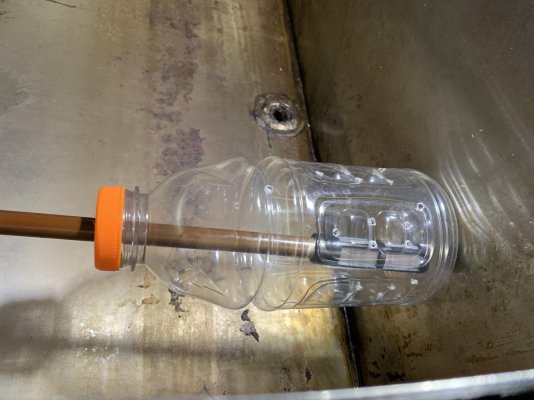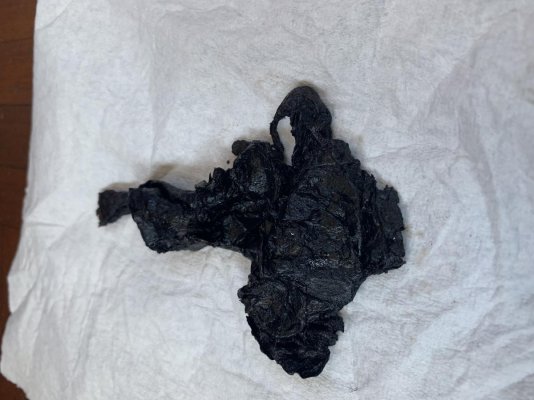SeaBreeze
Senior Member
- Joined
- Aug 16, 2018
- Messages
- 169
- Location
- USA
- Vessel Name
- SeaShell
- Vessel Make
- 1974 Marine Trader 34 Sedan
Some of you may have been following my ongoing challenges with sludge (bio-mass) in one of my fuel tanks. Through persistence and sweat I have been able to remove the fuel, cut a 6” access port through thick stainless, and remove the thick sludge that is accessible through the access port. Unfortunately the tank has four chambers separated by top to bottom baffles. Even with a fuel polisher and 80 psi of return fuel pressure there remains significant sludge in the two farthest chambers.
I have killed the sludge with Killem and removed the fuel. Currently I am attempting to dry the tank and the remaining sludge by circulating air. The good news is the sludge reduces in size significantly as it dries. It also sticks like glue to the bottom of the tank. Hopefully it will remain stuck permanently. In case it doesn’t, I have McGyvered a strainer over the pickup tube using a plastic Gatorade bottle. I drilled many holes in the bottle to allow fuel in but small enough to keep large debris and flaked sludge out. My plan is to periodically transfer the fuel and go into the tank to remove any detritus that may have moved into the cleaned compartment with the pickup tube.
I’m sure some will say this is a bad idea..... but I figure it is worth a shot. If for some reason, the Gatorade strainer begins to decompose I will make a better strainer out of stainless. Here are photos for your amusement.
I have killed the sludge with Killem and removed the fuel. Currently I am attempting to dry the tank and the remaining sludge by circulating air. The good news is the sludge reduces in size significantly as it dries. It also sticks like glue to the bottom of the tank. Hopefully it will remain stuck permanently. In case it doesn’t, I have McGyvered a strainer over the pickup tube using a plastic Gatorade bottle. I drilled many holes in the bottle to allow fuel in but small enough to keep large debris and flaked sludge out. My plan is to periodically transfer the fuel and go into the tank to remove any detritus that may have moved into the cleaned compartment with the pickup tube.
I’m sure some will say this is a bad idea..... but I figure it is worth a shot. If for some reason, the Gatorade strainer begins to decompose I will make a better strainer out of stainless. Here are photos for your amusement.




